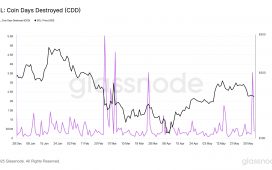As businesses grow to gain traction and revenue from the Internet, the increasing reliance is an easy target for Distributed Denial of Service (DDoS) attacks. Like any new venture, risks are an undeniable part that comes with it.
For eCommerce businesses, the main risk is DDoS attacks. Known as a dangerous and malicious attack to destabilize and halt services or products, its biggest drawback is disrupting operations. By making products or services utterly inaccessible to consumers, DDoS attacks effectively eliminate any incoming profits.
The key lies in understanding how it works to protect your business and keep out these intrusions. In this article, we will review the different layers and ways to prevent them.
7 Layers of DDoS Attacks
1. Physical Layer Attacks
These DDoS attacks target the network or infrastructure of a business. By using a range of techniques: overloading network switches, jamming wireless signals, or physically cutting cables, attackers can cut income streams if they can access a business’s location. The difficulty in preventing it lies in how unpredictable people can be. One of the best ways to combat this is by installing surveillance that regularly monitors and alerts owners of suspicious activities. This can mitigate risks, especially if alerts go directly to the police.
2. Data Link Layer Attacks
Unlike physical layer attacks, data link attacks target how network devices communicate. With a MAC (Media Access Control) address, attackers can trick digital devices into communicating with a fake network device. In other cases, it is also common to use STP (Spanning Tree Protocol) attacks to manipulate how the network switches forward traffic. The only way to manage this is by ensuring businesses have a foolproof authentication mechanism, including MAC filtering that drives smooth configuration.
3. Network Layer Attacks
Network layer attacks work by affecting data that is transmitted across the Internet. Through IP (Internet Protocol) fragmentation attacks, data is sent in small batches to overwhelm network devices. Or, attackers can engage in ICMP (Internet Control Message Protocol) floods where a target is drowned with ICMP messages. To prevent such occurrences, firewalls and intrusion detection systems should be utilized to block or flag uncommon network traffic.
4. Transport Layer Attacks
As the name suggests, transport layer attacks target how data is transmitted between network devices. By engaging in techniques such as TCP (Transmission Control Protocol) SYN floods, attackers send a high volume of TCP SYN requests to a target. On the other hand, they can also use UDP (User Datagram Protocol) floods, where a high volume of UDP packets is sent to the target. Hence, businesses need to implement load balancers and rate limiters to reduce and prevent possible transport layer attacks to halt a high volume of traffic from overwhelming their network devices.
5. Session Layer Attacks
Not limited to network devices, DDoS attacks can also occur in applications by targeting how they communicate. Using techniques such as SSL (Secure Sockets Layer) attacks, attackers exploit vulnerabilities in SSL/TLS (Transport Layer Security) protocols to intercept data, or they can drown a target with SIP (Session Initiation Protocol) messages. The easiest way to prevent session layer attacks is by ensuring applications are securely configured with updated SSL/TLS certificates.
6. Presentation Layer Attacks
As the name implies, presentation layer attacks work by attacking how information is presented to users. Through techniques such as XML (Extensible Markup Language) attacks, attackers either exploit vulnerabilities in XML parsers to execute malicious code or implement XSS (Cross-Site Scripting) attacks, where they inject malicious scripts into web pages. Firms can avoid presentation layer attacks with secure coding practices and frequent vulnerability scans.
7. Application Layer Attacks
For the application layer attacks, its emphasis lies in attacking the way applications function. Using techniques such as SQL (Structured Query Language) injection attacks, attackers inject malicious SQL queries into a target application to gain unauthorized access to data. In other cases, they can also use RFI (Remote File Inclusion) attacks to exploit vulnerabilities in web applications to execute malicious code. Unlike the other solutions, you can educate employees to prevent these attacks. You can eradicate this possibility by focusing on coding practices, phishing awareness, and password hygiene.
DDos Protection
DDoS Protection takes a community of conscious efforts to keep firms up and running. For businesses to excel, driving revenue and consumers to the store is no longer an option. Cybersecurity is vital to help safeguard existing assets and keep revenue flowing. Hence, implementing these features should be paramount to stay vigilant for businesses to flourish.










